A visit to Yuma Territorial Prison State Historic Park
Here we are at Day 6 of the trip – Wednesday, November 20th. Our day began at the Yuma Territorial Prison State Historic Park, then we drove 160 miles to Ajo for the night. I was going to do the entire day in one post, but it got too long, so I’ll start with the prison. It is Yuma’s #1 tourist destination, and we arrived a couple of minutes after they opened at 9:00.
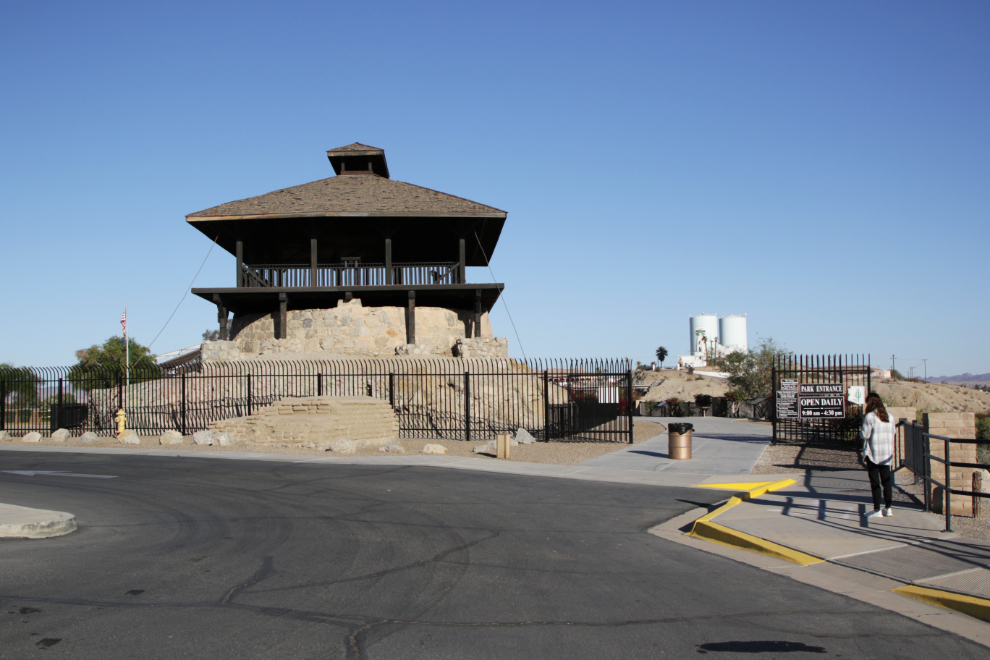
Before going in, we spent a while with the interpretive panels about the Yuma East Wetlands and Colorado River below us. It’s hard to believe now how much water used to flow in the Colorado, and how destructive the flooding was.


The prison is marked with an arrow towards the centre left in this Google Earth aerial of the wetlands.

Admission cost $9 for me, $10 for the kid 🙂 We started with the views. The bridge carries the Southern Pacific Railroad across the Colorado River, and the Saint Thomas Yuma Indian Mission can be seen to the right.

As you walk towards the prison itself, a timeline is the first interpretive display.


The view down to the entrance from the guard tower, which was seen in the first photo. The base of the tower was an 85,000-gallon granite-walled water reservoir, initially filled with water pumped up from the river. The water reservoir was built in 1881, five years after the prison opened, then the guard tower was built on top in 1882.

From the tower, Andrea noticed the unique parking symbols below – special parking for paralympians? We didn’t see this design anywhere else.

The Sally port, one of the last remaining original adobe structures of the 1875 Yuma Territorial Prison, served as the check point through which prisoners entered and left the prison. The model seen three photos below shows its position in the wall.

There are some “selfie” opportunities set up. First, you can be the warden 🙂

The building that now houses the museum and theatre was built with 60,000 adobe bricks during the Depression. It opened as a City museum in 1941. Interpretation in the museum is exceptionally well done.
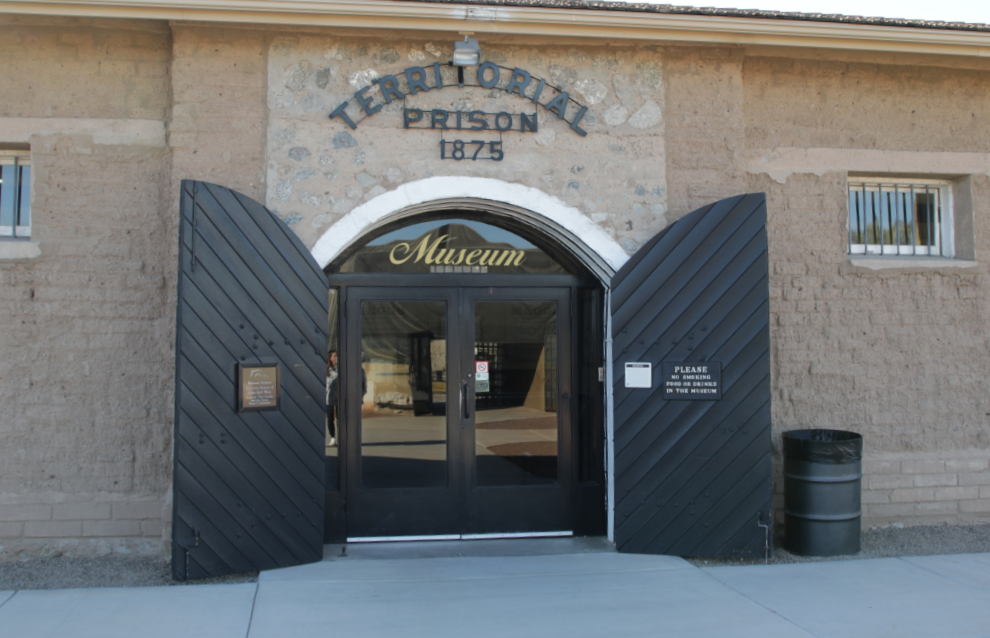
This model gives a good look at the prison layout.

A look at the prison cemetery, which we would walk down to at the end of our visit. Of the 3,069 people sentenced to serve time here, 111 died, and 104 were buried here.

There were two ver different opinions of the prison. While people inside generally considered it a “hell hole”…

…some people called it the “country club on the Colorado.”
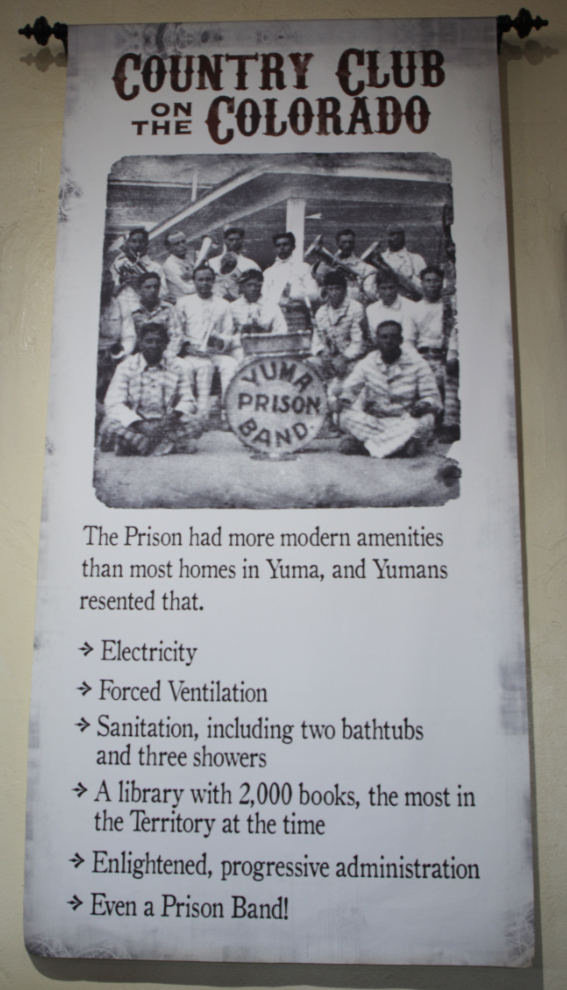
Some very interesting people spent time at the prison, such as C. E. Hobart, a lifer who spent most of his sentence at the Yuma Territorial Prison for murdering a man. He spent most of his days making adobe and quarrying rock to build a new prison cell. He was put in solitary confinement numerous times for violating prison rules and tried to escape twice, but during his free time, Hobert knitted beautiful lace.

A total of 29 women served time here, the most common crime (4) being adultery, then grand larceny (3).
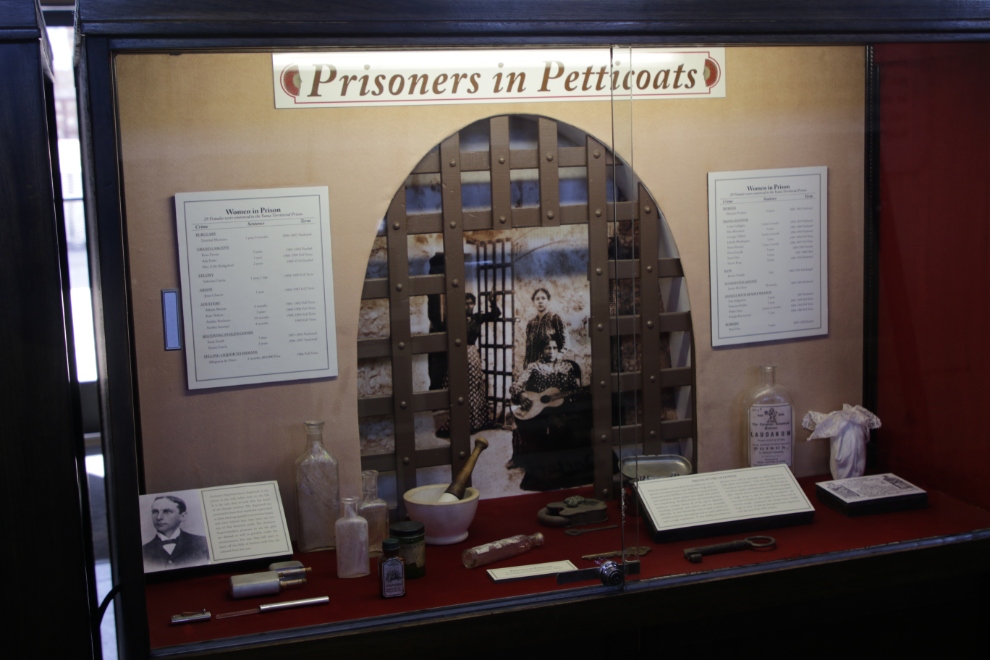
A truly fearsome 1862 Gatling Battery Gun capable of firing about 300 rounds per minute was mounted in the guard tower.

This grisly display details the June 16, 1905 hanging of Martin Ubillos, convicted of the 1903 murder of fellow inmate Simon Aldrete.

The main blocks of cells, holding up to six inmates each.


The New Yard, opened in 1900.

Time in the Dark Cell turned soe prisoners into model inmates. ome continued to break prison rules resulting in more days and nights in darkness. Others left the Dark Cell suffering extreme mental anguish – inconsolable, impossible for guards to manage. These prisoners were sent to The Hole. The Eternity Light symbolizes the lives of prisoners once held between these granite walls.
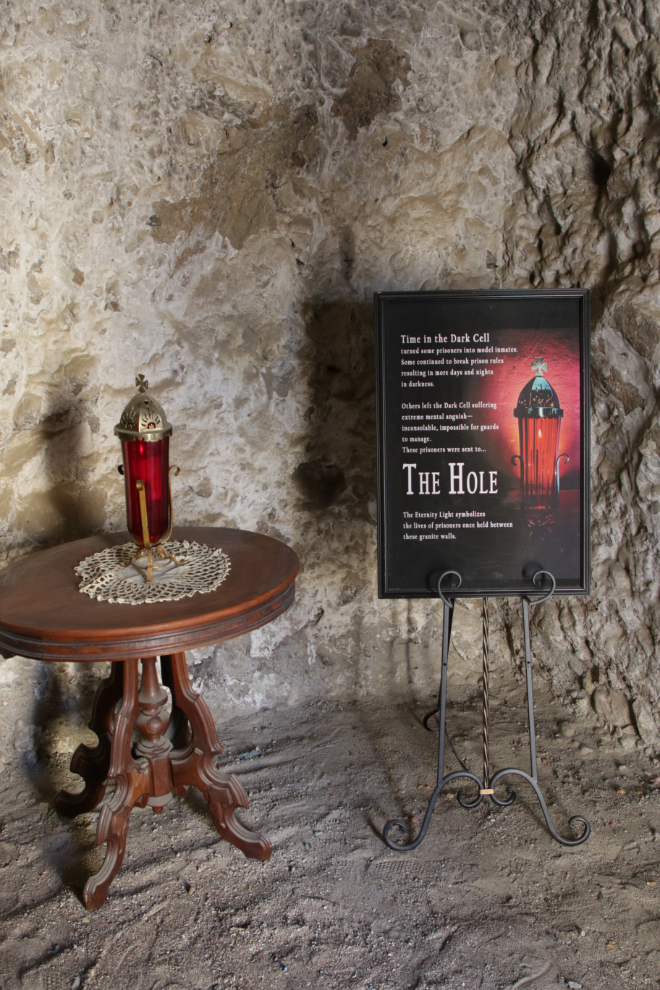

In 1909, unable to expand on the limited space available on Prison Hill, the prison closed, with inmates moved to a new territorial prison at Florence.
The Yuma High School then moved into the prison, and remained until 1914.
Leaving the prison, we then walked down to the cemetery.
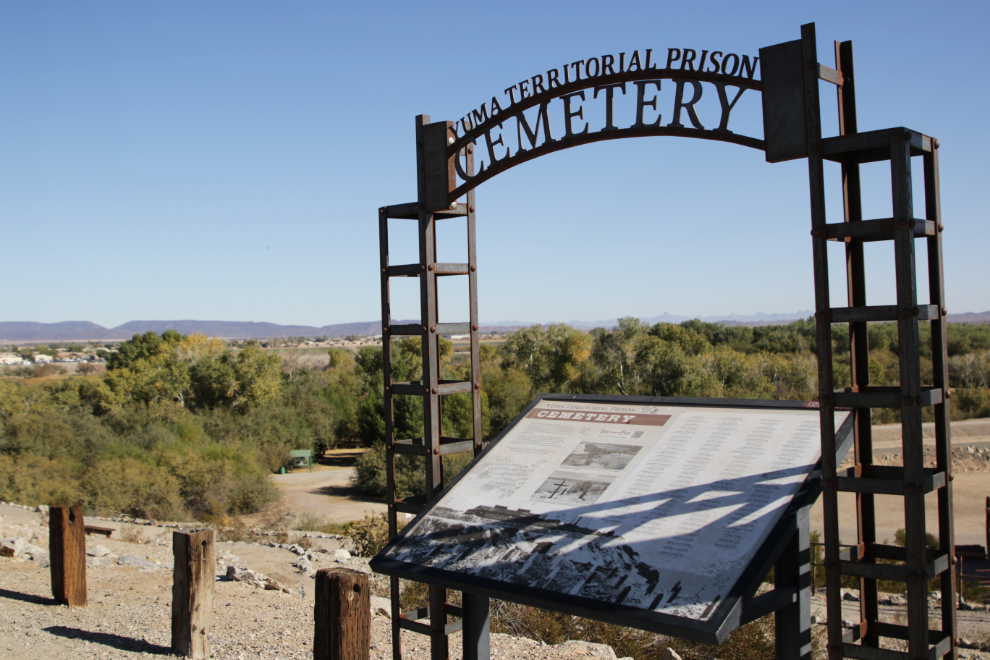
The final resting place of 104 inmates. The headboards all weathered and rotted away many years ago.

Finishing at the prison, we drove back down to historic downtown Yuma for another look, then just after 11:00 hit the road for Ajo.

